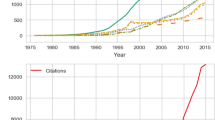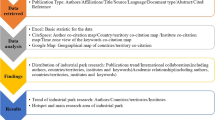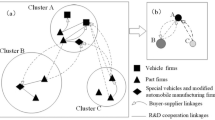Abstract
China, who owns the largest automobile consuming market, is becoming the largest automobile manufacturing country. However, a gap still lies between China and other traditional automobile manufacturing countries in terms of design capability and production efficiency. Standardization can effectively promote technological innovation and industrial upgradation, which enhances the overall performance of the automobile industry. This paper aims at identifying the structural problem in the automobile standard citation network in China, since the citation relationship reflects the transmission and development of knowledge or technologies. To this end, a dynamic standard citation network model is developed for ease of extraction of standard data at any time points. A set of complex network metrics at both node and network level are chosen with rational explanations in the context of automobile industry. With the data collected from publicized Web sites, the topological evolution of this network is analyzed as well. We significantly show that the standard citation networks at different time periods are generally loosely connected and contain too many isolated nodes. Meanwhile, the critical nodes in the standard citation network also change dynamically. We suggest that these isolated standards should be integrated into the citation network through revision activities.




Similar content being viewed by others
References
Chen J (2017) The Chinese Automobile Market and the Strategies of European, American, Japanese, Korean and Chinese Auto Makers. Int Relations Dipl 5(5):241–257
Darido G, Torres-Montoya M, Mehndiratta S (2014) Urban transport and CO2 emissions: some evidence from Chinese cities. Wiley Interdiscip Rev Energy Environ 3(2):122–155
Guo C, Jiang CX, Yang Q (2014) The development of organizational capabilities and corporate entrepreneurial processes: the case of Chinese automobile firms. Thunderbird Int Bus Rev 56(6):483–500
Leng K, Shi W, Chen J, Lv Z (2015) Design of an I-shaped less-than-truckload cross-dock: a simulation experiment study. Int J Bifurc Chaos 25(14):1152–1165
Hofacker FC, Malthouse EC, Sultan F (2016) Big data and consumer behavior: imminent opportunities. J Consum Mark 33(2):89–97
Hofmann E (2017) Big data and supply chain decisions: the impact of volume, variety and velocity properties on the bullwhip effect. Int J Prod Res 55(17):5108–5126
Jain V, Sangaiah AK, Sakhuja S (2018) Supplier selection using fuzzy AHP and TOPSIS: a case study in the Indian automotive industry. Neural Comput Appl 29(7):555–564
Wei Y, Chen F, Xiong F (2018) Dynamic complexities in a supply chain system with lateral transshipments. Complexity 2018:1–15
Nguyen DT, Shen Y, Thai MT et al (2013) Detecting critical nodes in interdependent power networks for vulnerability assessment. IEEE Trans Smart Grid 4(1):151–159
Zhou Z, Irizarry J, Li Q (2014) Using network theory to explore the complexity of subway construction accident network (scan) for promoting safety management. Saf Sci 64:127–136
Hu Y, Yang B (2017) Characterizing the structure of large real networks to improve community detection. Neural Comput Appl 28(8):2321–2333
Zhang W, He H, Cao B (2014) Identifying and evaluating the internet opinion leader community based on k-clique clustering. Neural Comput Appl 25(3–4):595–602
Wang B, Tang H, Guo C, Xiu Z, Zhou T (2006) Optimization of network structure to random failures. Phys A 368(2):607–614
Barabasi AL (2009) Scale-free networks: a decade and beyond. Science 325(5939):412–413
Shibata N, Kajikawa Y, Takeda Y, Matsushima K (2008) Detecting emerging research fronts based on topological measures in citation networks of scientific publications. Technovation 28(11):758–775
Kaijun L, Ya B, Linbo J, Han-chi F (2018) Research on agricultural supply chain system with double chain architecture based on blockchain technology. Future Gener Comput Syst 86:641–649
Watts DJ, Strogatz SH (1998) Collective dynamics of ‘small-world’ networks. Nature 393(6684):440
Acknowledgements
This work was supported by the National Natural Science Foundation of China [Grant Numbers 71401181, 71701213] and the MOE (Ministry of Education in China) Project of Humanities and Social Sciences [Grant Numbers 14YJC630136 and 15YJC630008].
Author information
Authors and Affiliations
Corresponding author
Ethics declarations
Conflict of interest
The authors declare that they have no conflict of interest.
Rights and permissions
About this article
Cite this article
Wei, Y., Chen, F., Xue, H. et al. Research on structural dynamics in Chinese automobile standard citation network. Neural Comput & Applic 32, 31–39 (2020). https://doi.org/10.1007/s00521-018-3740-6
Received:
Accepted:
Published:
Issue Date:
DOI: https://doi.org/10.1007/s00521-018-3740-6




